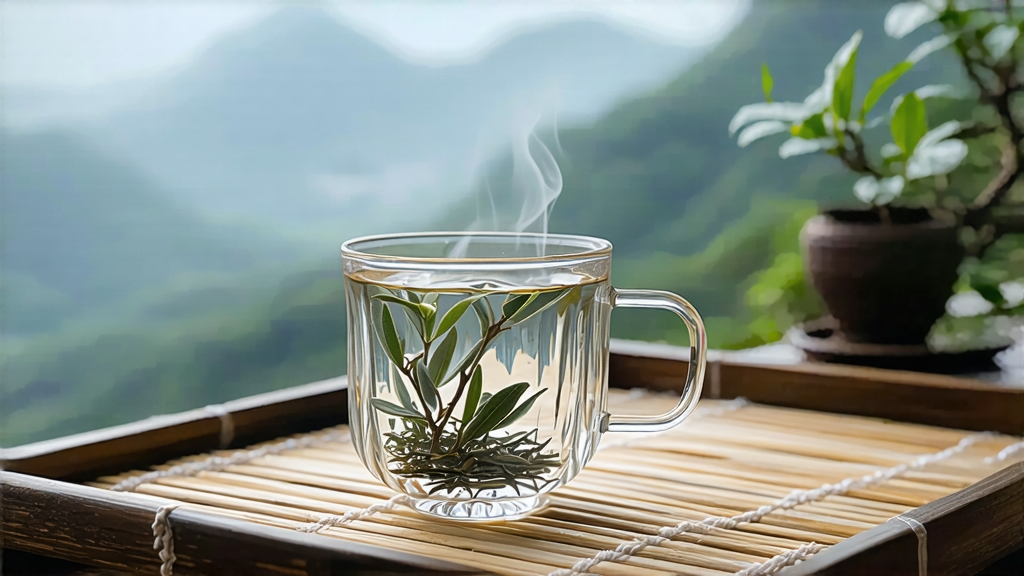
When Chinese tea lovers speak of “white tea,” they are not referring to a pale infusion alone, but to an entire philosophy of restraint. Among the six major families of Chinese tea, white tea is the least tempered by human hands, and within that family Bai Hao Yin Zhen—literally “White Hair Silver Needle”—stands as the most aristocratic. Produced only in the coastal hills of Fuding and Zhenghe in northern Fujian, it is picked for only a few spring days, handled only by gloves, and never twisted, rolled or roasted. The result is a tea so delicate that it seems to remember the moonlight under which it dried.
History: from imperial tribute to minimalist icon
Song-dynasty emperor Huizong (1082-1135) was the first recorded devotee, praising “white buds as bright as silver” in his Treatise on Tea. For centuries the downy tips were collected as tribute, freighted down the Wuyi mountain passes to Beijing in lead-lined chests. Overseas fame arrived late: in 1891 a Fuding merchant named Chen Changji shipped a small lot to London, where it was christened “Silver Tips” and served at Edwardian garden parties as a curiosity softer than Darjeeling. Today it is the benchmark against which all white teas are judged, yet still produced in volumes smaller than a single week’s output of Dragon-well green tea.
Micro-terroir: why Fuding tastes like sea breeze
The Taimu mountain range rises steeply from the East China Sea, trapping fog that condenses on tea bushes as slow, cool dew. Soils are lateritic granite, porous and slightly alkaline, forcing roots to dive deep for minerals that later translate into a subtle marine salinity. The indigenous cultivar, Fuding Da Bai Hao (“Big White Hair”), bears unusually large buds—up to 3 cm long—wrapped in a down so dense it can be seen floating like plankton in the cup. Because the bushes lie only 150–300 m above sea level, they awake early; the picking window for Yin Zhen opens around Qingming (early April) and closes before the spring rains swell the buds into leaves.
Plucking ritual: one bud, no leaf, no compromise
At dawn, when the mountain temperature hovers at 12 °C, pickers wearing cotton gloves snap off only the unopened needle. A skilled woman can gather 600 g of fresh buds in an hour, yet 30,000 of those buds—five hours of patient work—will shrink to a single 500 g tin after drying. The harvest is finished before 10 a.m.; any later and the sun would begin to oxidise the tips, reddening the liquor and forfeiting the prized “silver” appearance.
Withering: the art of doing almost nothing
Unlike green tea, which is pan-fired to arrest oxidation, white tea is allowed to breathe. The buds are laid 2 cm deep on bamboo trays stacked like sliding drawers in a sun-lit corridor. For 36–48 hours they lose moisture slowly, while ambient enzymes nibble at the leaf chemistry, generating honey-like aldehydes and a faint orchid lactone. The master’s judgment is sensory: when a bud snaps cleanly and the down smells like warm rice milk, the trays are moved upstairs to a softly heated loft (28 °C, 65 % RH) for another day. No machine can replicate this; too much wind wrinkles the surface, too little light traps grassy notes. The finished tea contains 8–10 % residual moisture—just enough to keep the bud pliable, but so little that it will age for decades.
Craft grades: three invisible tiers
European buyers often meet only one label—“Silver Needle”—yet within Fuding three internal grades circulate:
• Tian Cha (Heaven Grade): 100 % unopened buds, 2.5 cm or longer, down pure white, no purple or green speck.
• Te Cha (Special Grade): buds 2–2.5 cm, allowing 3 % open tips.
• Yi Cha (First Grade): buds 1.5–2 cm, up to 8 % tiny leaflets.
Prices diverge five-fold between Tian Cha and Yi Cha, but all qualify legally as Bai Hao Yin Zhen; knowing the code is the buyer’s only protection.
Ageing: when silver turns to gold